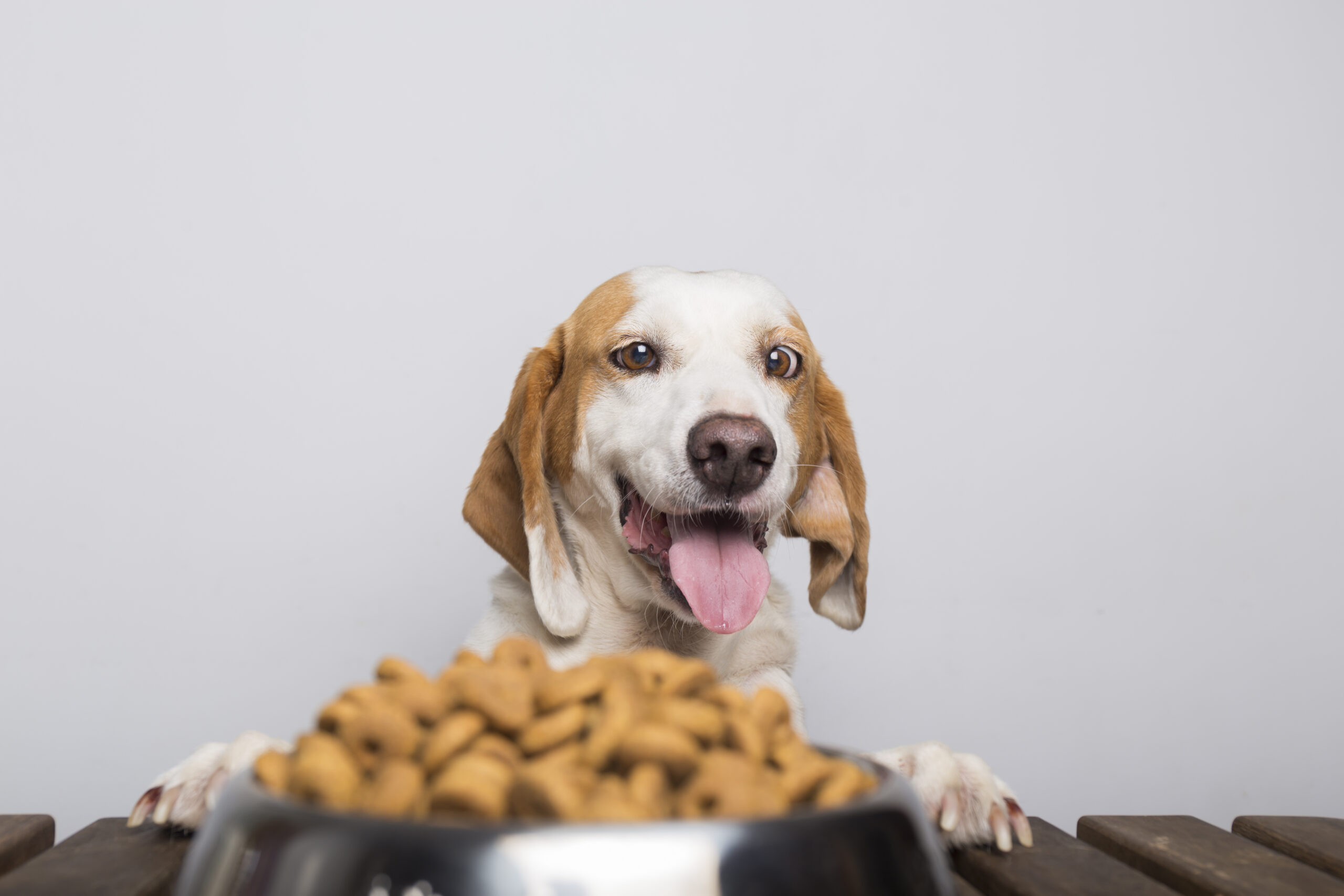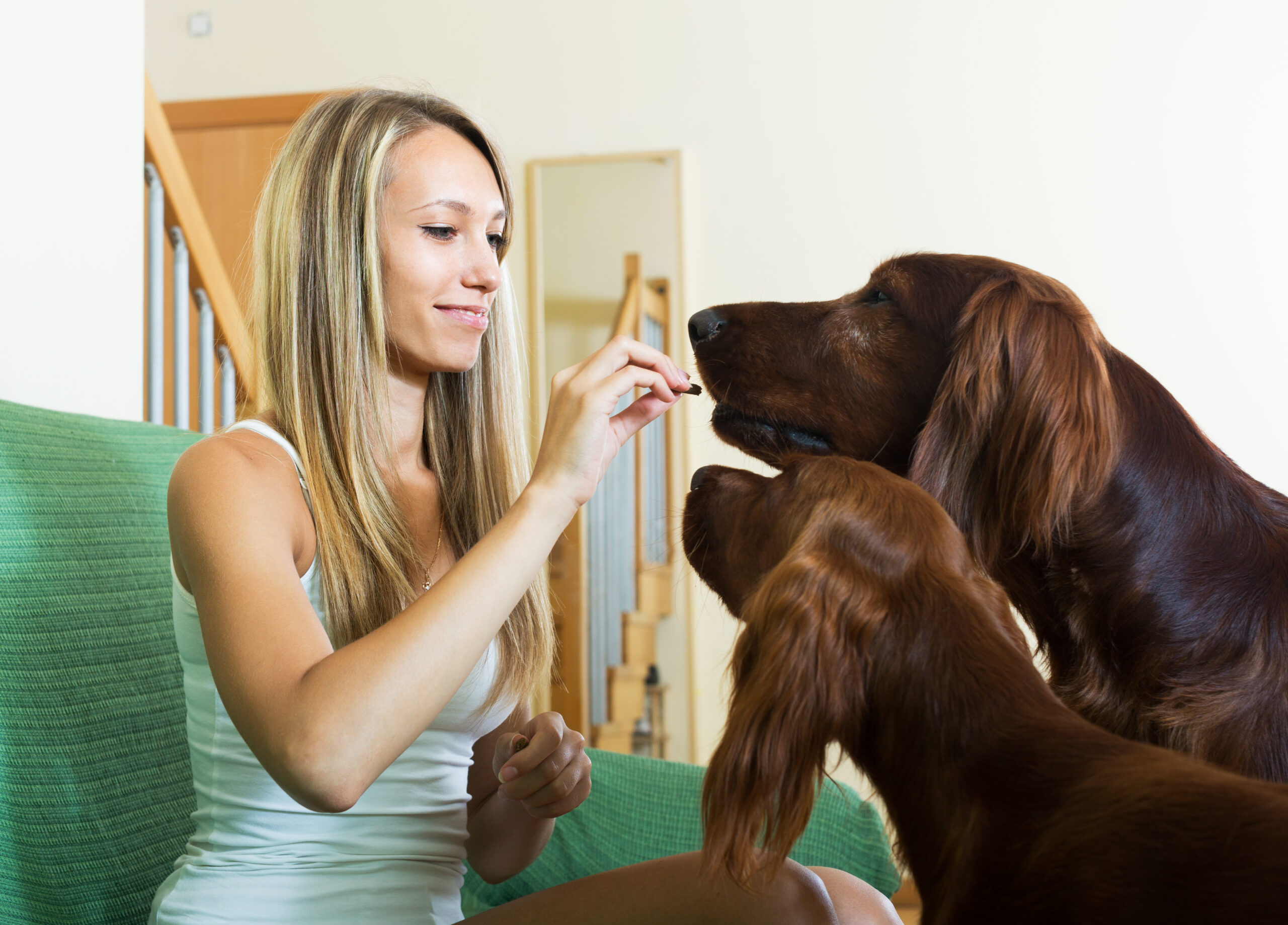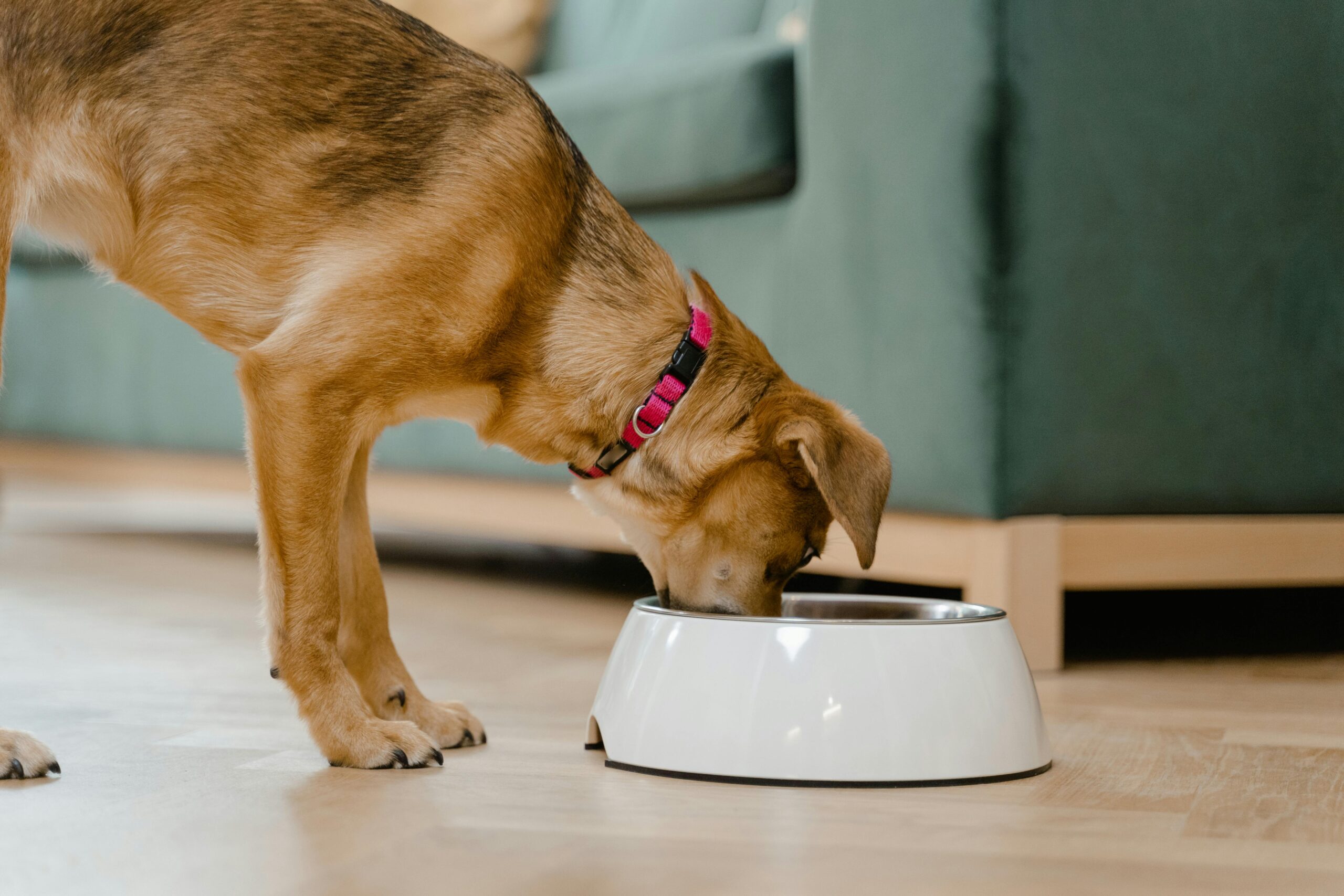Dog Feeding Guide: How much dog food should I feed my dog?
Feeding your dog might seem simple, but many pet owners find it confusing to know how much to give, what foods are safe, and when to feed. You might ask yourself, “How much dog food should I feed my dog?” It’s important because feeding too much can cause weight gain and health problems, while feeding too little means your dog may not get enough energy and nutrients. Plus, you may wonder if it’s okay to share some of your food, like eggs or hot dogs, with your furry friend.
This Dog Feeding Guide is here to clear up those questions. We’ll explain the basics of what your dog needs to stay healthy, including proteins, fats, and vitamins. You’ll find easy tips on how much to feed, with a handy dog feeding chart to make it simple. We’ll also answer common questions like, “Can I feed my dog eggs?” or “Is it safe to give hot dogs?” and share advice on feeding raw meat. Finally, we’ll help you find the best times to feed your dog and how to change their diet as they grow or their needs change. With Pupzcorner’s expert guidance, you’ll feel confident giving your dog the right nutrition for a happy, healthy life.

Understanding Dog Nutrition: The Essentials of a Balanced Diet
Feeding your dog a balanced diet is essential for their overall health and wellbeing. A proper dog feeding guide emphasizes the six key nutrients dogs need: proteins, fats, carbohydrates, vitamins, minerals, and water. These nutrients work together to support your dog’s body functions, energy, and growth. Proteins provide essential amino acids necessary for building and repairing tissues. Since dogs can’t produce all amino acids on their own, these must come from their diet. Fats are crucial for energy and maintaining a healthy coat and skin, while also supplying essential fatty acids like omega-3 and omega-6. Carbohydrates, primarily from grains and vegetables, provide energy and fiber, which is vital for digestion. Try the Pure Balance Wild & Free Salmon & Pea Recipe for a grain-free option rich in protein and omega fatty acids that support a shiny coat and healthy skin.
Vitamins and minerals play a key role in many body functions, including immune support, metabolism, and bone health. While dogs can produce vitamin C on their own, they still need vital nutrients such as vitamins A, D, E, K, and minerals like calcium and phosphorus from their food. Additionally, fresh and clean water is crucial for your dog’s health, as it makes up over half of their body weight and supports all systems.
For adult dog feeding, the right portion size and nutrient balance depend on factors such as age, breed, activity level, and health status. Using a dog feeding chart can simplify determining the appropriate meal amounts, making balanced feeding easier for pet owners. When choosing dog food, look for labels that say “complete and balanced,” which indicates that the food meets nutritional standards set by organizations like AAFCO. This ensures your dog receives all the necessary nutrients for a healthy and thriving life.
For balanced daily nutrition, the Original Dry Dog Food – Savory Beef & Chicken Flavors from PupzCorner keeps adult dogs strong, active, and satisfied.

How Much Food Should I Feed My Dog?
Knowing how much to feed a dog is essential for keeping your pet healthy and preventing issues like obesity or malnutrition. While it’s tempting to give your dog extra treats or fill their bowl generously, portion control is key. Dogs don’t instinctively stop eating when they’ve had enough, so as an owner, it’s important to measure their food based on their specific needs.
Factors That Impact How Much Dog Food Should I Feed My Dog?
Several factors influence how much dog food should I feed my dog? These include your dog’s age, weight, breed, activity level, and metabolism.
- Puppies require more frequent meals with higher calorie content to support their rapid growth.
- Adult dogs need fewer calories, adjusted to their energy expenditure.
- Active or working dogs burn more calories and need larger portions compared to less active or senior dogs, who tend to require fewer calories due to lower energy levels.
Understanding your dog’s unique needs is essential to providing the right amount of food for their lifestyle.
Using a Dog Feeding Chart for Portion Control
A dog feeding chart can make portioning easier and more accurate. Most commercial dog food packages provide feeding guidelines based on your dog’s weight, offering a recommended daily amount that can then be divided into two or three meals. For instance, a medium-sized dog weighing around 30 pounds might be fed about 1⅔ to 2⅓ cups of dry food a day, split into morning and evening meals. Enhance your dog’s meals with the Simply Crafted Adult Wet Dog Food – Chicken Meal Topper for added flavor, moisture, and essential nutrients.
By following the recommended portions on the dog food packaging and adjusting based on your dog’s condition, you can ensure they receive the right amount of food.
Adjusting Portions Based on Weight and Activity Level
To maintain optimal health, it’s important to monitor your dog’s weight and adjust food portions accordingly. If your dog gains or loses weight unexpectedly, consider consulting your veterinarian to modify their diet. How much dog food should I feed my dog? can vary depending on the specific needs of your dog at any given time.
For the best selection of premium dog food and feeding supplies, visit the Pupzcorner Shop Now page and find the perfect products for your dog’s needs.

Dog Feeding Chart: Portion Sizes by Age, Weight, and Activity Level
| Dog’s Age | Dog’s Weight | Activity Level | Recommended Daily Intake | Meals Per Day | Notes |
| Puppy | 5-10 lbs | Low to Moderate | ½ – 1 cup | 3-4 meals | High-protein food for growth. |
| Puppy | 10-20 lbs | Moderate to High | 1 – 2 cups | 3-4 meals | More food for growth and energy. |
| Adult Dog | 10-20 lbs | Low to Moderate | 1 – 1.5 cups | 2 meals | Adjust for activity level. |
| Adult Dog | 20-40 lbs | Moderate | 1.5 – 2.5 cups | 2 meals | More food for active dogs. |
| Adult Dog | 40-60 lbs | Active | 2.5 – 3.5 cups | 2 meals | High-energy dogs need more. |
| Senior Dog | 10-20 lbs | Low to Moderate | 1 – 1.25 cups | 2 meals | Reduce calories for slower metabolism. |
| Senior Dog | 20-40 lbs | Low to Moderate | 1.5 – 2 cups | 2 meals | Watch for weight gain in older dogs. |
| Working Dog | 20-40 lbs | Very High | 3 – 4 cups | 2-3 meals | Active working dogs need more food. |
| Working Dog | 40-60 lbs | Very High | 4 – 5 cups | 2-3 meals | Increase portions for heavy activity levels. |
Additional Considerations:
- Feeding Frequency: Puppies and younger dogs typically require more frequent meals (3-4 times a day), while adults can generally be fed 2 meals a day. Senior dogs may benefit from smaller, more frequent meals due to slower digestion.
- Calories & Treats: Treats should be included in your dog’s total daily calorie count. Be cautious with high-calorie treats, as they can contribute to weight gain if not accounted for in the overall food portion.
- Monitoring Weight: Regularly weigh your dog and monitor their body condition. Adjust portions based on their weight and activity level. If your dog is gaining weight, reduce portions; if they are losing weight, increase their food intake.
- Health Conditions: Dogs with specific health conditions (e.g., diabetes, allergies, or kidney disease) may require customized feeding plans. Always consult with a vet if your dog has health concerns affecting their diet.
Looking for the perfect comfort for your dog? Check out Pupzcorner Best Calming Dog Beds to help your pet relax and sleep soundly.

Best Time to Feed Your Dog: Creating a Healthy Feeding Schedule
The best time to feed your dog depends on several factors, including their age, breed, and lifestyle. Establishing a consistent feeding schedule not only supports your dog’s health but also helps regulate their metabolism and energy levels throughout the day.
Feeding Schedule for Adult Dogs
Most adult dogs thrive on two meals per day, typically given in the morning and evening, spaced about 8 to 12 hours apart. This schedule helps maintain steady energy levels, prevents overeating, and reduces the likelihood of excessive hunger between meals. Sticking to a consistent feeding routine supports good digestion and metabolism, which is crucial for adult dog feeding.
For optimal adult dog food options, visit our Pupzcorner Shop to explore our curated selection of high-quality dog food for adult dogs.
Feeding Schedule for Puppies
Puppies require more frequent meals to support their rapid growth and development. Generally, puppies need three to four meals a day until about six months old. After this stage, you can gradually transition them to the adult feeding schedule. Larger breeds may take longer to transition, while smaller breeds may adjust more quickly. Always tailor feeding frequency to your puppy’s breed and size. For growing pups, the Plus Puppy Dry Dog Food – High Protein Formula promotes strong muscles, healthy growth, and balanced energy every day.
Feeding Schedule for Active or Working Dogs
Active or working dogs often require additional meals or slightly larger portions to fuel their energy needs. These dogs burn more calories throughout the day and may need three meals or a larger portion per meal to maintain their stamina and health. Adjusting portions based on activity levels is essential to avoid fatigue and ensure your dog receives enough energy.
If your active dog needs extra nutrition, consider our Premium Dog Food designed for higher energy levels and muscle support.
Feeding Schedule for Senior Dogs
As dogs age, their metabolism slows down. Senior dogs benefit from smaller, more frequent meals, typically spaced throughout the day. This feeding schedule helps with digestion and prevents overloading their system, which is especially important for dogs with reduced appetite or digestive issues. Additionally, smaller meals are easier on aging teeth and joints. Keep older pups healthy with the Life Protection Formula Small Breed Senior Dog Food. It supports joint health, immunity, and gentle digestion for aging dogs.
For senior dog food that promotes joint health, explore our Pupzcorner Senior Dog Food designed to meet the unique needs of aging dogs.
Why Consistency Matters
Establishing a regular feeding routine benefits your dog both physically and emotionally. It helps reduce anxiety, prevents begging, and provides structure to your dog’s day. Additionally, a consistent schedule makes it easier to monitor your dog’s appetite, which is important for identifying any health changes.

Final remarks about Dog Feeding Guide
Creating a consistent dog feeding schedule is crucial to your pet’s health and happiness. By tailoring the feeding routine to your dog’s age, size, activity level, and breed, you ensure they get the right amount of food and nutrients. Regular feeding, along with proper portion control, supports digestion, metabolism, and overall well-being.
Consistency is key not only for physical health but also for emotional stability. A predictable feeding routine helps reduce anxiety, prevents overeating, and promotes good behavior. Whether you have a puppy that needs more frequent meals, an active working dog requiring extra portions, or a senior dog with special feeding needs, adjusting mealtimes accordingly will support their unique health needs.
Ready to give your dog the best care possible? Visit Pupzcorner to find premium dog food, feeding supplies, and expert tips to keep your dog healthy and happy. Start creating the perfect feeding routine for your dog today! Additionally, for personalized assistance, feel free to contact us at pupzcornermail@gmail.com.
FAQs about Dog Feeding Guide
How often should I feed my dog?
Most adult dogs should be fed twice a day, in the morning and evening. Puppies, on the other hand, need 3-4 meals per day until about six months old, after which they can transition to a twice-a-day schedule.
How much food should I give my dog?
The amount of food depends on your dog’s age, weight, activity level, and health. Use a dog feeding chart as a guideline, and consult your veterinarian to determine the appropriate portion size for your dog.
Can I feed my dog treats along with their meals?
Yes, treats can be part of your dog’s diet, but they should be counted as part of their daily calorie intake. Avoid giving too many treats, as they can lead to weight gain.
How can I tell if I’m feeding my dog the right amount?
Monitor your dog’s weight and body condition. If your dog is gaining or losing weight unexpectedly, adjust their portion size accordingly. Regular veterinary checkups can also help ensure you’re on the right track.
What should I do if my dog refuses to eat?
If your dog refuses to eat, first check for any health issues and consult your vet. Sometimes a change in diet or a more consistent feeding routine may help.

